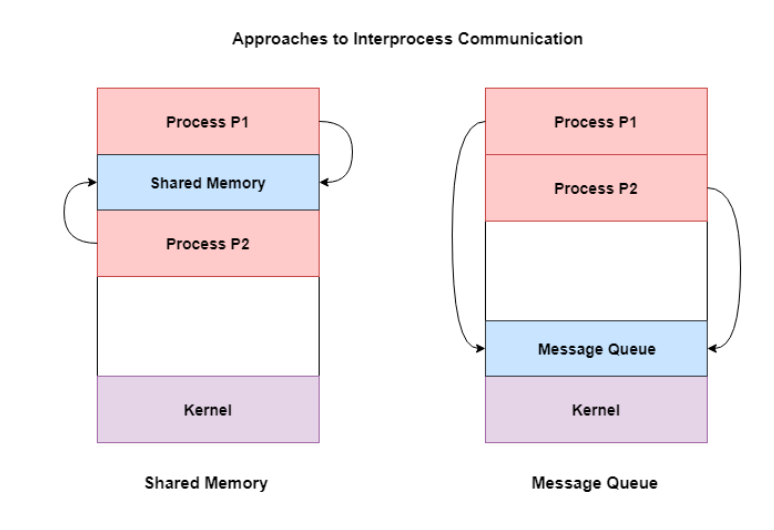
 Data Structure
Data Structure Networking
Networking RDBMS
RDBMS Operating System
Operating System Java
Java MS Excel
MS Excel iOS
iOS HTML
HTML CSS
CSS Android
Android Python
Python C Programming
C Programming C++
C++ C#
C# MongoDB
MongoDB MySQL
MySQL Javascript
Javascript PHP
PHP
- Selected Reading
- UPSC IAS Exams Notes
- Developer's Best Practices
- Questions and Answers
- Effective Resume Writing
- HR Interview Questions
- Computer Glossary
- Who is Who
What is Interprocess Communication?
Interprocess communication is the mechanism provided by the operating system that allows processes to communicate with each other. This communication could involve a process letting another process know that some event has occurred or the transferring of data from one process to another.
A diagram that illustrates interprocess communication is as follows ?

Synchronization in Interprocess Communication
Synchronization is a necessary part of interprocess communication. It is either provided by the interprocess control mechanism or handled by the communicating processes. Some of the methods to provide synchronization are as follows ?
-
Semaphore
A semaphore is a variable that controls the access to a common resource by multiple processes. The two types of semaphores are binary semaphores and counting semaphores.
-
Mutual Exclusion
Mutual exclusion requires that only one process thread can enter the critical section at a time. This is useful for synchronization and also prevents race conditions.
-
Barrier
A barrier does not allow individual processes to proceed until all the processes reach it. Many parallel languages and collective routines impose barriers.
-
Spinlock
This is a type of lock. The processes trying to acquire this lock wait in a loop while checking if the lock is available or not. This is known as busy waiting because the process is not doing any useful operation even though it is active.
Approaches to Interprocess Communication
The different approaches to implement interprocess communication are given as follows ?
-
Pipe
A pipe is a data channel that is unidirectional. Two pipes can be used to create a two-way data channel between two processes. This uses standard input and output methods. Pipes are used in all POSIX systems as well as Windows operating systems.
-
Socket
The socket is the endpoint for sending or receiving data in a network. This is true for data sent between processes on the same computer or data sent between different computers on the same network. Most of the operating systems use sockets for interprocess communication.
-
File
A file is a data record that may be stored on a disk or acquired on demand by a file server. Multiple processes can access a file as required. All operating systems use files for data storage.
-
Signal
Signals are useful in interprocess communication in a limited way. They are system messages that are sent from one process to another. Normally, signals are not used to transfer data but are used for remote commands between processes.
-
Shared Memory
Shared memory is the memory that can be simultaneously accessed by multiple processes. This is done so that the processes can communicate with each other. All POSIX systems, as well as Windows operating systems use shared memory.
-
Message Queue
Multiple processes can read and write data to the message queue without being connected to each other. Messages are stored in the queue until their recipient retrieves them. Message queues are quite useful for interprocess communication and are used by most operating systems.
A diagram that demonstrates message queue and shared memory methods of interprocess communication is as follows ?


